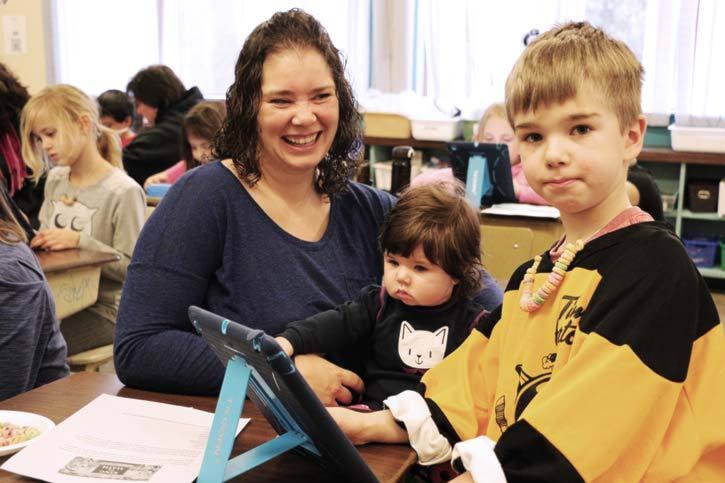Forget Lego blocks and crayons, kindergarten kids may start coding soon.
That is what came from The #BCTECH Summit on Jan. 18 to 19 when Premiere Christy Clark said that over the next three years students from kindergarten from grade 12 will learn the basics of coding.
Coding is the shortened term for computer programing. It’s the recipe behind the creation or the formula behind apps on your smart phone, video games, websites and computer software.
Teaching kids how to code is not an entirely new concept in Prince Rupert according to Sandra Jones the superintendent of the Prince Rupert School District.
“We’re not completely unfamiliar with it and I know the high school is perhaps even more connected. We’ll look at it. We’ll look at it with our teachers and see if it fits in with what we’re doing,” she said.
Although Clark made the announcement that coding should be introduced over the next three years, Jones has yet to receive a notification from the education minister on how it might be implemented.
Even if coding was taught to all students, Jones said that schools would be prepared. “We’re very well resourced with computers in this district and have been for a long time. It’s been a priority for many years.”
At Charles Hays Secondary School, students have had the opportunity to take two different computer programming courses since 2008. “Our students are creating their own games and all kinds of things. I think at the high school level we’re already there. The push is to get kids doing it younger,” said the principal of Charles Hays, Sandra Pond.
At Roosevelt Park Elementary, Mike McDowall’s grade 3 and 4 classroom is getting well-versed in computer programming, and it’s so much fun some of the students may not even realize they’re doing it.
This school year, McDowall and his students took part in the Hour of Code event, a one-hour introduction that teaches the basics of computer science. The event promotes giving all students the opportunity to code.
If anyone is skeptical that students as young as six and seven can learn how to code, McDowall successfully pulled off the Hour of Code with grade 1 and 2 students the previous school year.
This school year, he said there were five different classes and 125 students who participated. They used an app and the website, called Tynker. Roosevelt has a school set of iPads and each class had one during the event.
Tynker looks like a video game app that could be played on a phone or iPad, except it teaches the basics of coding. If you want the monster character to walk three steps to grab the jelly bean then the student has to add three “walk” blocks to the code, which looks like a puzzle piece. Then the monster walks three steps to reach the jelly bean.
“Basically it gets them thinking about problem solving, logic. It’s a great one for early learners because you don’t necessarily have to do the coding part itself but it actually shows you what coding looks like,” McDowall said.
The challenge itself isn’t necessarily the children getting involved. McDowall said he is more comfortable with technology but other teachers who are less tech-savvy will have to get extra training. Roosevelt is also lucky to have class sets of iPads but not every school has that kind of hardware.
But if grade 1 students can do it, McDowall is sure that teachers will be able to pick up on it as well.
